#urban displacement
Text

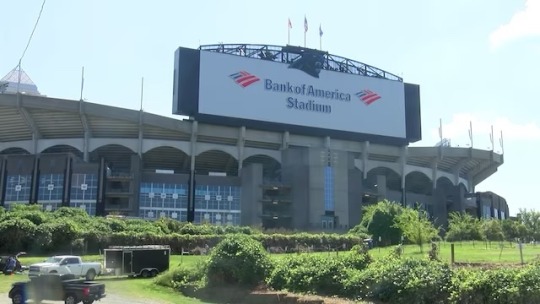
Tens of thousands of people visit Bank of America stadium to watch the Carolina Panthers play football each year – never realizing they are walking on top of lost remnants of a once-thriving Black neighborhood established in the aftermath of the Civil War.
The stadium itself is built directly atop a relic of segregated healthcare: Good Samaritan Hospital, the first private hospital built in North Carolina to serve Black patients. Built in 1891, this historic hospital was one of the oldest of its kind in the United States.
It was also the site of one of the “most horrific racial incidents in Charlotte's history,” according to Dan Aldridge, professor of History and Africana Studies at Davidson College.
A mob of 30 to 35 armed, white men invaded the hospital, dragging a man out of the hospital and into the streets – and shooting him dead in front of the building.
The concept of “urban renewal” destroyed Black neighborhoods, communities, businesses and homes all across North Carolina, especially between 1949 and 1974.

Durham, for example, once had a prominent Black Wall Street, where Black businesses flourished; however, the historic community was almost completely destroyed by construction of the Durham Freeway.
Likewise, Raleigh once had 13 historic Freedmen's Villages, built entirely by men and women freed from slavery in the aftermath of emancipation. Today, only two are remaining, and Oberlin Village, the largest one, was cut in half by the construction of Wade Avenue.
Similarly, Charlotte's Brooklyn community was built by men and women freed from slavery in the late 1800s. Like many Black communities around the state, it was forced into an awful geographical location – on low-lying land where flooding, sewage and sanitation issues made life hazardous.
According to history in the Charlotte Library, the Brooklyn area was first identified on maps as ‘Logtown’ in the late 1800s – a name that matches closely with titles given to similar freedmen villages in the Triangle area, which were often called slang names like ‘Slabtown’ or ‘Save Rent’ due to their inexpensive homes.
In the 1900s, the area became known as Brooklyn, “a name that would become synonymous with the Black community until urban renewal.”
“It's a tragedy that so many stadiums were built on sites that were once Black communities,” said Aldridge. “They're poor neighborhoods. They're struggling neighborhoods. I won't romanticize them by claiming they're all like Black Wall Street, but they were people's homes and people's communities, and they were taken from them.”
Many historically significant Black sites were lost in urban renewal; likewise, many Black communities were forced to build in geographically unfit areas, making growing wealth and property more difficult – and more easily lost over time.
At its peak, Brooklyn was home to:
Charlotte's first Black public school
Charlotte's only Black high school
The city's first free library for Black patrons
The first companies to offer white collar jobs to Black workers
The first private hospital for Black citizens in Charlotte
Today, football players run up and down the Bank of America field for the amusement of thousands of cheering fans. However, in 1913, over a century ago, that same land had a very different story.
(continue reading) related ↵ related ↵
#politics#urban renewal#structural racism#carolina panthers#bank of america#bank of america stadium#panthers stadium#good samaritan hospital#black wall street#blacklivesmatter#racism#erasure#displacement#north carolina#systemic racism#brooklyn nc#brooklyn north carolina#black history#football#nfl#nfl football#whitewashing history
109 notes
·
View notes
Text
youtube
#my greens#many urbanists are posting the same things but trhis one sums up everything well and is from this yr#urbanism#suburban sprawl#car centric infrastructure#cars#cities#pollution#displacement#racism#classism#video#ubran planning#transit#public transit#car transit#infrastructure#city infrastructure#suburban experiment
2 notes
·
View notes
Text
A History of Development and Disruption: Hella Town
Detail of a historic map of Oakland. (Photo thanks to UC Press)
This week on Making Contact, we bring you a story of urban planning and how race has shaped American cities. In a new book, Hella Town: Oakland’s History of Development and Disruption, Author Mitchell Schwarzer explores the origins and the lasting impacts of transportation improvements, systemic racism, and regional competition on…

View On WordPress
#Caltrans#Cypress Freeway#Displacement#environmental racism#Gentrification#MacArthur Maze#Mitchell Schwarzer#Oakland#pollution#Southern Pacific Railroad Corridor#systemic racism#transportation improvements#urban planning
2 notes
·
View notes
Text
Rainwater Floods Homes in Bagbera, Jamshedpur
Residents Seek Higher Ground as Intermittent Showers Wreak Havoc
Unexpected downpour inundates low-lying areas of Bagbera, forcing residents to evacuate their homes and seek shelter on higher ground.
JAMSHEDPUR – Heavy rainfall causes flooding in Bagbera’s low-lying areas, affecting approximately 60-70 households in Naya Basti.
Intermittent showers on Friday led to a sudden influx of rainwater in…
#मुख्य#Bagbera inundation#emergency response#Featured#flood mitigation#Jamshedpur flooding#local administration#monsoon havoc#Naya Basti evacuation#residential displacement#urban waterlogging#weather-related crisis
0 notes
Text
How Urban Renewal and a Sports Arena Wiped Out this Japantown
youtube
#urban renewal#salt lake city#displacement#japantown#immigration#gentrification#geography#capitalism#economics#us history#Youtube
1 note
·
View note
Text

0 notes
Text
Exploring the Complex Identity of Sudanese Arabs: History, Ethnicity, Sudanese Language and Cultural Dynamics of Arabs in Sudan
A fascinating look at the diverse Arab tribes that call Sudan home
As a member of the Sudanese Arab community, why should I consider using over-the-phone interpretation services?
The Sudanese Arabs have a rich cultural heritage deeply rooted in the Arabic language. However, navigating daily life in a diverse society can sometimes present linguistic barriers. Over-the-phone interpretation…

View On WordPress
#Arab tribes#arts and crafts#conflicts#culinary traditions#culture#displacement#heritage#inclusivity#Islam#language#Language Services#Sudan#Sudanese Arabs#Sudanese society#traditions#urbanization
0 notes
Text
What i've been learning thru my research is that Lawn Culture and laws against "weeds" in America are deeply connected to anxieties about "undesirable" people.
I read this essay called "Controlling the Weed Nuisance in Turn-of-the-century American Cities" by Zachary J. S. Falck and it discusses how the late 1800's and early 1900's created ideal habitats for weeds with urban expansion, railroads, the colonization of more territory, and the like.
Around this time, laws requiring the destruction of "weeds" were passed in many American cities. These weedy plants were viewed as "filth" and literally disease-causing—in the 1880's in St. Louis, a newspaper reported that weeds infected school children with typhoid, diphtheria, and scarlet fever.
Weeds were also seen as "conducive to immorality" by promoting the presence of "tramps and idlers." People thought wild growing plants would "shelter" threatening criminals. Weeds were heavily associated with poverty and immortality. Panic about them spiked strongly after malaria and typhoid outbreaks.
To make things even wilder, one of the main weeds the legal turmoil and public anxiety centered upon was actually the sunflower. Milkweed was also a major "undesirable" weed and a major target of laws mandating the destruction of weeds.
The major explosion in weed-control law being put forth and enforced happened around 1905-1910. And I formed a hypothesis—I had this abrupt remembrance of something I studied in a history class in college. I thought to myself, I bet this coincides with a major wave of immigration to the USA.
Bingo. 1907 was the peak of European immigration. We must keep in mind that these people were not "white" in the exact way that is recognized today. From what I remember from my history classes, Eastern European people were very much feared as criminals and potential communists. Wikipedia elaborates that the Immigration Act of 1924 was meant to restrict Jewish, Slavic, and Italian people from entering the country, and that the major wave of immigration among them began in the 1890s. Almost perfectly coinciding with the "weed nuisance" panic. (The Immigration Act of 1917 also banned intellectually disabled people, gay people, anarchists, and people from Asia, except for Chinese people...who were only excluded because they were already banned since 1880.)
From this evidence, I would guess that our aesthetics and views about "weeds" emerged from the convergence of two things:
First, we were obliterating native ecosystems by colonizing them and violently displacing their caretakers, then running roughshod over them with poorly informed agricultural and horticultural techniques, as well as constructing lots of cities and railroads, creating the ideal circumstances for weeds.
Second, lots of immigrants were entering the country, and xenophobia and racism lent itself to fears of "criminals" "tramps" and other "undesirable" people, leading to a desire to forcefully impose order and push out the "Other." I am not inventing a connection—undesirable people and undesirable weeds were frequently compared in these times.
And this was at the very beginnings of the eugenics movement, wherein supposedly "inferior" and poor or racialized people were described in a manner much the same as "weeds," particularly supposedly "breeding" much faster than other people.
There is another connection that the essay doesn't bring up, but that is very clear to me. Weeds are in fact plants of the poor and of immigrants, because they are often medicinal and food plants for people on the margins, hanging out around human habitation like semi-domesticated cats around granaries in the ancient Near East.
My Appalachian ancestors ate pokeweed, Phytolacca americana. The plant is toxic, but poor people in the South would gather the plant's young leaves and boil them three times to get the poison out, then eat them as "poke salad." Pokeweed is a weed that grows readily on roadsides and in vacant lots.
In some parts of the world, it is grown as an ornamental plant for its huge, tropical-looking leaves and magenta stems. But my mom hates the stuff. "Cut that down," she says, "it makes us look like rednecks."
9K notes
·
View notes
Text
Launching Home Illinois vs Homelessness
Homelessness is not an identity, it's a set of circumstances. Today, I'm proud to unveil Home Illinois which focuses on prevention, crisis response, housing units, and staffing. pic.twitter.com/npnxoDoAE0— Governor JB Pritzker (@GovPritzker) February 15, 2023
View On WordPress
1 note
·
View note
Photo
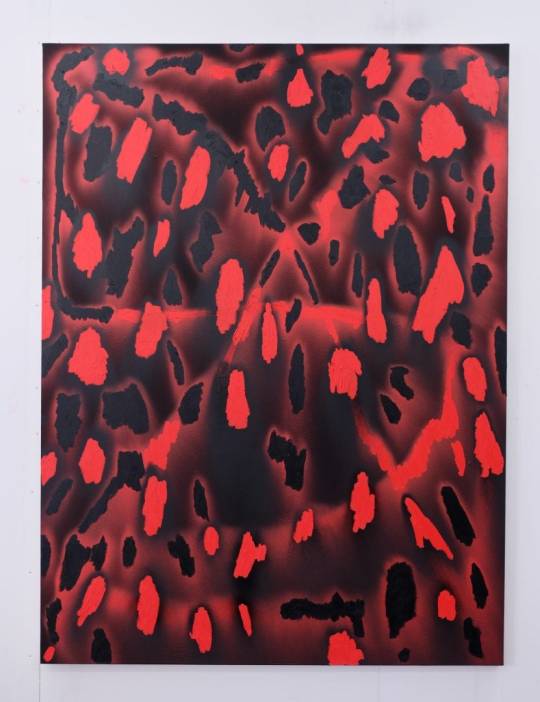
Post Vandalism on display at “Displacement”
Among the new artistic currents developed in recent years, Post Vandalism has a particular ability to read the present by codifying a new urban language, which is not only that of writers on walls but can have a more abstract and tangible dimension.
On June 16 in the Contemporary Cluster gallery spaces in Rome, “Displacement,” a new exhibition project curated by Giacomo Guidi in collaboration with Ginnika, is presented. Contemporary Cluster has been trying for years to spread a new model of artistic culture, involving different aspects of visual cultures by alternating and experimenting between media, in continuous fusion and cooperation between them.

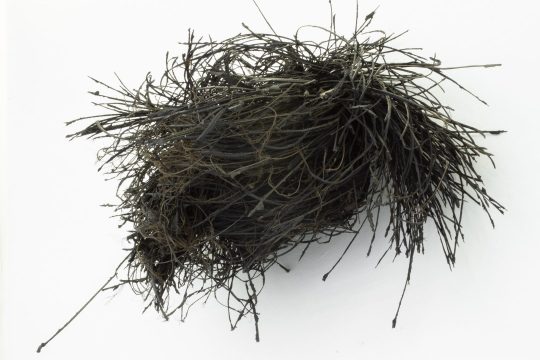

#post vandalism#art#displacement#artistic currents#urban language#giacomo guidi#ginnika#contemporary cluster
0 notes
Text
"A recent World Meteorological Organization report called heat waves the “deadliest meteorological hazard” from 2015 to 2019, affecting people living on all continents, and setting new national heat records in many regions.
Canada’s top weather event in 2021 was British Columbia’s record-breaking heat, according to Environment and Climate Change Canada. The temperature in Lytton, B.C., hit 49.6 C on June 29. The following day a wildfire destroyed 90 per cent of the town, killing two people and displacing 1,200 others.
Heat waves also exacerbate existing health issues, including cardiovascular and respiratory disease. They’re associated with increased hospital admissions, psychological stress and aggressive behavior, as well as excess mortality.
During heat waves, the highest temperatures are often found in urbanized areas. Urbanization is almost always associated with an increase in paved, impervious areas, and often a decrease in greenery. Concrete and asphalt roads, and other built materials readily absorb, store and release heat, raising city temperatures, a phenomenon called the urban heat island.
Many studies have shown that urban forests can reduce the urban heat island, and many policies focus their attention on large green spaces.
Small green spaces, such as yards, rooftops and small parcels of undeveloped land, can make impressive contributions to lowering urban heat, but they are often overlooked when developing strategies for urban cooling.
The effect of small green spaces
Cities rarely have the opportunity to add large green spaces to help counter the effects of heatwaves. Smaller vegetated spaces, however, can still meaningfully decrease local land temperatures.
Small green spaces, such as yards, rooftops and small parcels of undeveloped land, can make impressive contributions to lowering urban heat, but they are often overlooked when developing strategies for urban cooling.
A recent study in Adelaide, Australia, found that tree canopy cover and, to a lesser extent, grass cover decreased local daytime surface temperatures by up to 6 C during extreme summer heat conditions. Further inland, suburban yards and gardens can decrease local surface temperatures up to 5 C.
At a quite small scale, on the order of tens of square metres, trees reduced daytime surface temperatures twice as much as grass cover. But grass and other small, low-lying plants, grow relatively quickly, compared to trees.
Cities should adopt short-term and long-term strategies to respond to extreme heat, including the replacement of paved and impervious surfaces with grasses and turf, and increasing tree plantings to boost canopy coverage.
Amplifying the cooling effect
Furthermore, when managing small green spaces, city planners and foresters can select tree species based on their ability to cool the environment. Green spaces with a high diversity of tree species have a greater cooling effect in spring, summer and fall. They also have a larger maximum drop in temperature in the summer, compared to spaces that are less diverse.
For example, tree canopies with large leaves and high transpiration rates — the evaporation of water from plants occurring at the leaves — could provide more cooling.
Planting a variety of species, of different heights, can have a larger cooling effect than tall trees alone.
The structure of green space may also influence its cooling efficiency. In summer, a plant community with multiple layers of trees, shrubs and herbs can further decrease air temperature by 1 C on a sunny day and 0.5 C on a cloudy day, compared with an area only dominated by tall trees...
But overall, trees usually have a stronger effect on cooling than grass. Planting trees in groups, not individually or in lines, is recommended for regulating the microclimate (local climate conditions near the Earth’s surface).
Small green spaces can offer a lot of summer cooling in cities. And cities can learn to manage the configuration of small green spaces better to get more cooling benefits and minimize the trade-offs."
-via GoodGoodGood, July 4, 2024
#green space#urban#urban landscape#urban forest#urban green spaces#food forest#permaculture#gardening#microclimate#cooling#conversation#global warming#climate change#climate action#solarpunk#rooftop garden#ecopunk#meterology#ecology#ecosystems#environmental science#plant trees#good news#hope
689 notes
·
View notes
Text
Historical Analysis: class and injustice in 'The Ressurrectionists' minisode
Alternate title: why we're tempted to be upset with Aziraphale and why that's only halfway fair
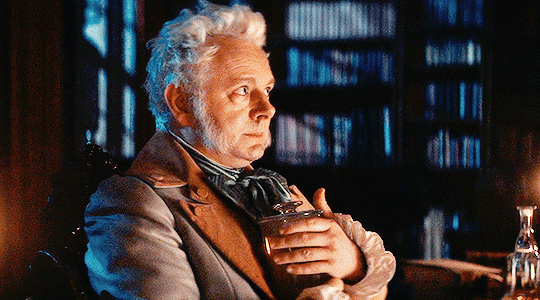
Okay so first off huge thanks to @makewayforbigcrossducks for asking the question (and follow-up questions lol) that brought me to put these thoughts all together into a little history nerd ramble. That question being, Why is Aziraphale so clueless? Obviously, from a plot perspective, we know we need to learn some lessons about human moral dilemmas and injustices. But from a character perspective? A lot of this minisode is about Aziraphale being forced to confront the flaws of heavenly logic. This whole idea that "poverty is ineffable" basically boils down to 'yeah some people are poor, but their souls can be saved just as if not more easily that way, so it's not our problem and they probably deserve it anyway for not working hard enough,' a perspective that persists in many modern religious circles. Aziraphale isn't looking at the human factor here, he's pretty much purely concerned about the dichotomy of good and wicked human behavior and the spiritual consequences thereof, because that's what he's been told to believe. His whole goal is to "show her the error of her ways." He believes, quite wholeheartedly, that he's helping her in the long run.
"the lower you start, the more opportunities you have"
So here's what we're asking ourselves: Why did it take him so bloody long to realize how stupid that is? Sure, he's willing to excuse all kinds of things in the name of ineffability, but if someone in the year of our lord 2023 told me he was just now realizing that homelessness was bad after experiencing the past two centuries, I'd be resisting the urge to get violent even if he WAS played by Michael Sheen.
Historical context: a new type of poverty
Prior to the 19th century (1800s), poverty was a very different animal from what we deal with now. The lowest classes went through a dynamic change leading up to the industrial revolution, with proto-industrialization already moving people into more manufacture-focused tasks and rapid urbanization as a result of increasingly unlivable conditions for rural peasantry. The enclosure of common lands and tennancies by wealthy landowners for the more profitable sheep raising displaced lots of families, and in combination with poor harvests and rising rents, many people were driven to cities to seek out new ways of eeking out a living.
Before this, your ability to eat largely would have depended on the harvest in your local area. This can, for our purposes, be read as: you're really only a miracle away from being able to survive the winter. Juxtapose this, then, with the relatively new conundrum of an unhoused urban poor population. Now if you want to eat, you need money itself, no exceptions, unless you want to steal food. Charity at the time was often just as much harm as good, nearly always tied deeply up in religious attitudes and a stronger desire to proselytize than improve quality of lie. As a young woman, finding work in a city is going to be incredibly difficult, especially if you're not clean and proper enough to present as a housemaid or other service laborer. As such, Elspeth turns to body snatching to try to make a better life for herself and Wee Morag. She's out of options and she knows it.
You know who doesn't know that? Aziraphale.
The rise of capitalism
The biggest piece of the puzzle which Aziraphale is missing here is that he hasn't quite caught onto the concept of capitalism yet. To him, human professions are just silly little tasks, and she should be able to support herself if she just tried. Bookselling, weaving, farming, these are all just things humans do, in his mind. He suggests these things as options because it hasn't occurred to him yet that Elspeth is doing this out of desperation, but he also just doesn't grasp the concept of capital. Crowley does, he thinks it's hilarious, but Aziraphale is just confused as to why these occupations aren't genuine options. Farming in particular, as briefly touched on above, was formerly carried out largely on common land, tennancies, or on family plots, and land-as-capital is an emerging concept in this period of time (previously, landowners acted more like local lords than modern landlords). Aziraphale just isn't picking up on the fact that money itself is the root issue.
Even when he realizes that he fucked up by soup-ifying the corpse, he doesn't offer to give them money but rather to help dig up another body. He still isn't processing the systemic issues at play (poverty) merely what's been immediately presented to him (corpses), and this is, from my perspective, half a result of his tunnel-vision on morality and half of his inability to process this new mode of human suffering.
Half a conclusion and other thoughts
So we bring ourselves back around to the question of Aziraphale's cluelessness. Aziraphale is, as an individual, consistently behind on the times. He likes doing things a certain way and rarely changes his methodology unless someone forces his hand. Even with the best intentions, his ability to help in this minisode is hindered by two points: 1)his continued adherance to heavenly dogma 2)his inability to process the changing nature of human society. His strongest desire at any point is to ensure that good is carried out, an objective good as defined by heavenly values, and while I think it's one of his biggest character hangups, I also can't totally blame him for clinging to the only identity given to him or for worrying about something that is, as an ethereal being, a very real concern. Unfortunately, he also lacks an understanding of the actual human needs that present themselves. Where Elspeth knows that what she needs is money, Aziraphale doesn't seem to process that money is the only solution to the immediate problem. This is in part probably because a century prior the needs of the poor were much simpler, and thus miraculous assistance would never have interfered with 'the virtues of poverty'. (You can make someone's crops grow, and they'll eat well, but giving someone money actually changes their economic status.) Thus, his actions in this episode illustrate the intersection of heavenly guidelines with a weak understanding of modern structures.
This especially makes sense with his response to being told to give her money. Our angel is many things, but I would never peg him as having any attachment to his money. He's not hesitant because he doesn't want to part with it, he's hesitant because he's still scared it's the wrong thing to do in this scenario. He really is trying to be good and helpful. So yes, we're justifiably pretty miffed to see him so blatantly unaware and damaging. He definitely holds a lot of responsibility for the genuine tragedy of this minisode, and I think Crowley pointing out that it's 'different when you knew them' is an extremely important moment for Aziraphale's relationship with humanity. Up until now, he's done a pretty good job insulating himself from the capacity of humans for nastiness, his seeming naivity at the Bastille being case in point.
In the end, I think Aziraphale's role in this minisode is incredibly complex, especially within its historical context. He's obstinate and clueless but also deeply concerned with spiritual wellbeing (which is, to Aziraphale, simply wellbeing) and doing the right thing to be helpful. While it's easy to allow tiny Crowley (my beloved) to eclipse the tragic nature and moral complexity of this minisode, I think in the end it's just as important to long-term character development as 'A Companion to Owls'. We saw him make the right choice with Job's children, and now we see him make the wrong choice. And that's a thing people do sometimes, a thing humans do.
~~~
also tagging @ineffabildaddy, @kimberellaroo, and @raining-stars-somewhere-else whose comments on the original post were invaluable in helping me organize my thoughts and feelings about this topic. They also provided great insight that, in my opinion, is worth going and reading for yourself, even if it didn't factor into my final analysis/judgement.
If I missed anything or you have additional thoughts, please please share!!! <3
#this was a monster of a post to write#in no small part because I was relying more on my own historical knowledge than usual so I had to double check myself constantly#but I had a lot of fun and I hope you enjoyed it as much as I did#good omens#good omens 2#good omens analysis#good omens meta#the resurrectionists#good omens season 2#good omens minisode#nerd shit#ineffable husbands#aziraphale good omens
572 notes
·
View notes
Text
Israeli forces on Tuesday expanded their ground offensive into urban refugee camps in central Gaza after bombarding the crowded Palestinian communities and ordering residents to evacuate.[...]
Israel’s offensive is one of the most devastating military campaigns in recent history. [...]
Residents of central Gaza described shelling and airstrikes shaking the Nuseirat, Maghazi and Bureij camps. The built-up towns hold Palestinians driven from their homes in what is now Israel during the 1948 war, along with their descendants.
“The bombing was very intense,” Radwan Abu Sheitta said by phone from Bureij.
The Israeli military ordered residents to evacuate a belt of territory the width of central Gaza, urging them to move to nearby Deir al-Balah. The U.N. humanitarian office said the area ordered evacuated was home to nearly 90,000 people before the war and now shelters more than 61,000 displaced people, mostly from the north.
The military later said it was operating in Bureij and asserted that it had located a Hamas training camp.[...]
Defense Minister Yoav Gallant said Israel faces a “multi-arena war” on seven fronts — Gaza and the West Bank, Lebanon, Syria, Iraq, Yemen and Iran. “We have responded and acted already on six of these,” he told the Knesset’s Foreign Affairs and Defense Committee.[...]
More than 85% of Gaza’s 2.3 million people have been driven from their homes. U.N. officials say a quarter of the territory’s population is starving under Israel’s siege[...]
In an area Israel had declared a safe zone, a strike hit a home in Mawasi, a rural area in the southern province of Khan Younis. One woman was killed and at least eight were wounded, according to a cameraman working for The Associated Press at the nearby hospital.
In response, Israel’s military said that it wouldn’t refrain from operating in safe zones, “if it identifies terrorist organization activity threatening the security of Israel.”
26 Dec 23
454 notes
·
View notes
Text
New Icebreaker Questions:
Favorite High-speed Train in Europe
Painting you are most likely to touch in a gallery
Top 5 Superfund sites in [your state]
How are trains involved in your ideal date
What is you opinion on the current funding model of the cities public transit network
What ways could places like the city of Detroit recover from urban decline without displacing remaining residents
To what extent do you believe that the suburbanisation of the 1950s and 1960s contributed to decline of American Leftism after the 1970s
What are the political ramifications of the decision to privatize conrail in the 80s and how can they be dealt with in our current situation
Where do you see the state of American Rail being in 20 years, do you think it will be more usable, why, please answer in the form of a short essay between 500 and 750 words
Which rail lines do you believe could be most easily electrified
300 notes
·
View notes
Text

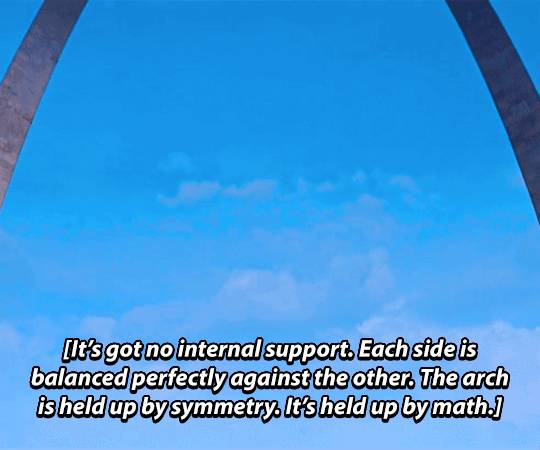
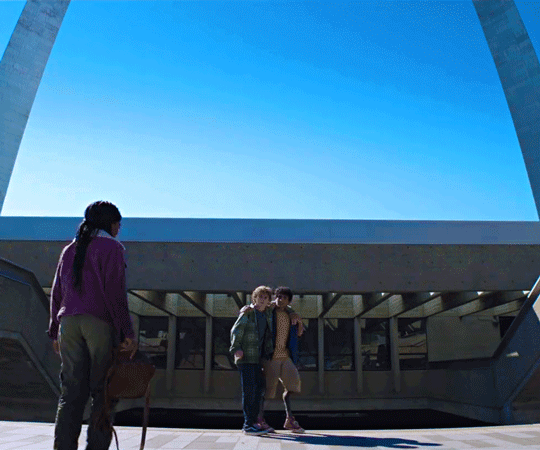


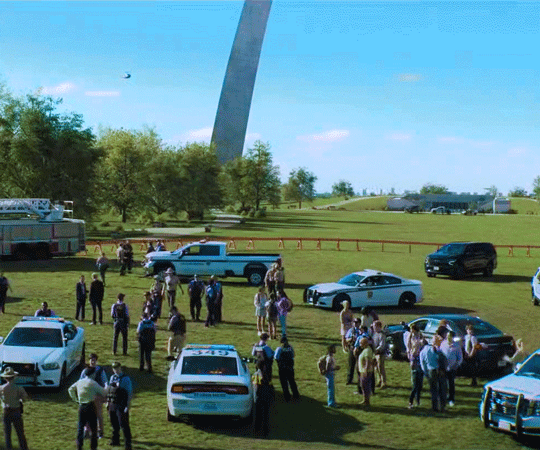


“Annabeth craned her neck to see the Gateway Arch, which looked to me like a huge shopping bag handle stuck on the city.” The Lightning Thief page 202
PERCY JACKSON AND THE OLYMPIANS 1x04 + 1x05: A Typical Day in St. Louis
“The highway also cut off many residents—mainly poor and black—from the development around the arch, aggravating racial tensions still fresh from when construction unions barred African-Americans from working on the site. The displacement came to epitomize 20th-century ‘urban renewal’—a euphemism, James Baldwin quipped, for Negro removal.’” Fred Kaplan for The Smithsonian Magazine, The Twisted History of the Gateway Arch
#sliced bread#bread stuff#pjo#st louis#gateway arch#percy jackon and the olympians#police cw#pjoedit#pjo tv show#pjo series#percy jackson tv show#percy jackson#annabeth chase#grover underwood#disney#the lightning thief#pjosource#pjotvedit#percyjacksonedit#tvedit#eero saarinen#redlining#for the rest of my life i’m gonna be pointing at the fourth gif going ‘see that speck? that’s percy jackson falling from the gateway arch’#and they’ll say ok grandpa let’s get you to bed#fuck slpd btw
151 notes
·
View notes
Text
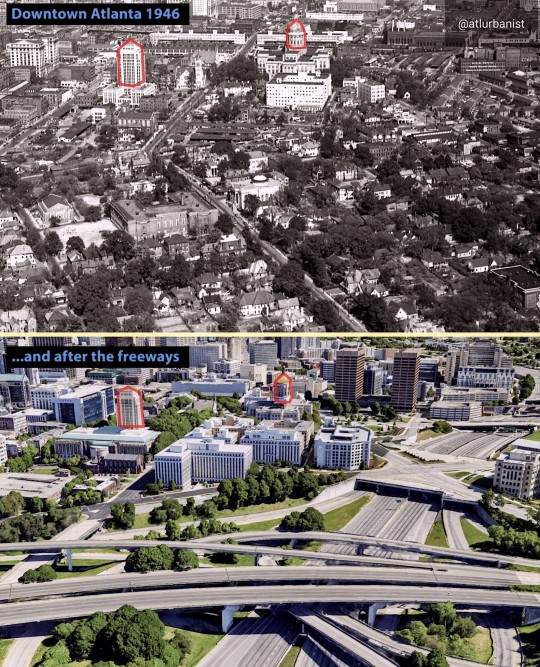
Same view of Downtown Atlanta, before & after freeways destroyed city fabric, displaced residents, and established a car-centric framework.
I highlighted City Hall & the Capitol.
I post this not to make everyone depressed, but to emphasize how much work we need to do.
Overcoming this major wound to our urban fabric is a huge task and it will require a laser focus on great urbanism for every property, so we can establish a pedestrian-centered density that reduces reliance on cars.
384 notes
·
View notes